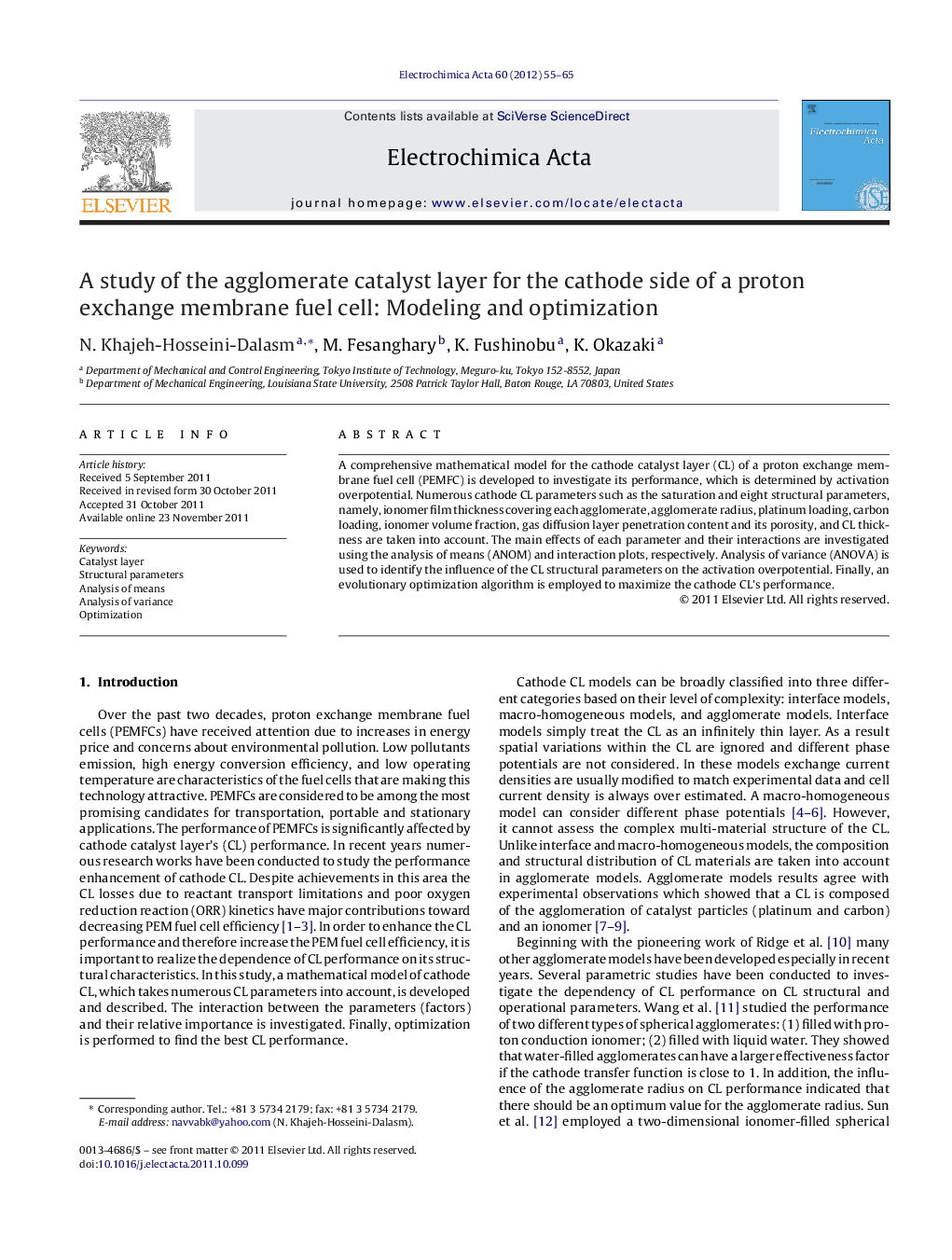| Article ID | Journal | Published Year | Pages | File Type |
|---|---|---|---|---|
| 188958 | Electrochimica Acta | 2012 | 11 Pages |
A comprehensive mathematical model for the cathode catalyst layer (CL) of a proton exchange membrane fuel cell (PEMFC) is developed to investigate its performance, which is determined by activation overpotential. Numerous cathode CL parameters such as the saturation and eight structural parameters, namely, ionomer film thickness covering each agglomerate, agglomerate radius, platinum loading, carbon loading, ionomer volume fraction, gas diffusion layer penetration content and its porosity, and CL thickness are taken into account. The main effects of each parameter and their interactions are investigated using the analysis of means (ANOM) and interaction plots, respectively. Analysis of variance (ANOVA) is used to identify the influence of the CL structural parameters on the activation overpotential. Finally, an evolutionary optimization algorithm is employed to maximize the cathode CL's performance.
► A comprehensive mathematical model of a CL performance was developed to investigate the effects of nine CL parameters on the CL activation overpotential. ► An analysis of means was performed to show the main effect of CL activation overpotential with respect to each parameter. ► The potential interaction between parameters was analyzed using interaction plots. ► CL thickness was found to be the most influential structural parameter affecting the CL performance. ► It was found that the optimum performance was achieved at several intermediate points for the agglomerate radius and the ionomer volume fraction, and at one of the endpoints of the range for other parameters.
